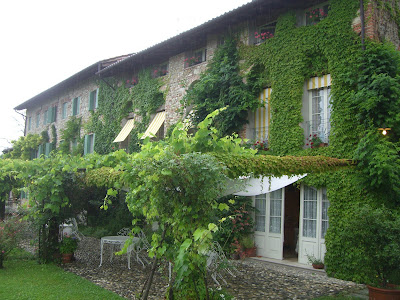Although the retreatring Germans bombed the crematorium, one can see in the photograph below that the architect attempted to preserve the idea of the crematorium. Not only is it possible to see its outlines, but the floor is recreated in tile, and the reflective surface provides an effective contrast with the brick walls of the original rice husking factory.
In the background are memorials to the people who died here.

 Because the Riseria di San Sabbo is as much memorial as museum, it includes a kind of sculpture garden. The sculpture in the center here represents the smokestack.
Because the Riseria di San Sabbo is as much memorial as museum, it includes a kind of sculpture garden. The sculpture in the center here represents the smokestack.Even though much of the central courtyard has been turned into a memorial space, some areas of the Riseria have been preserved as they were during World War II. Thus visitors have a sense of what it would have been like to have been in prison there.

As you can see from the vase in the lower left of the photograph, people often place flowers as tributes to the people who suffered and died here. While it's hard to see from the photograph exactly how small the cells are, the size is one of the things that bothered the students most when they imagined being held in one of these cells for months on end. The door of the cell on the right has been removed so viewers can see how small it is.
 The floral tributes are more evident in the photograph on the left, which also preserves the tiny window from which prisoners could look out on the larger holding area.
The floral tributes are more evident in the photograph on the left, which also preserves the tiny window from which prisoners could look out on the larger holding area.The literature also indicated that the cells were very close to the area where torture and executions took place. It would have been difficult for prisoners to have remained unaware of what was happening to their fellow prisoners.








